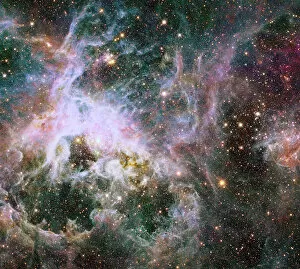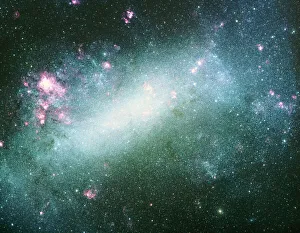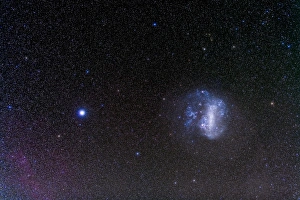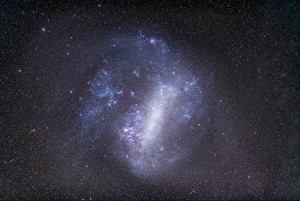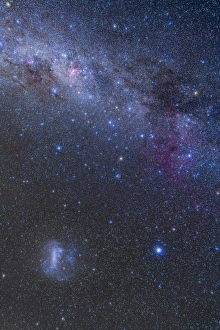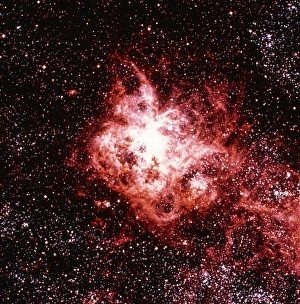Tarantula Nebula Collection
The Tarantula Nebula, a breathtaking star formation spectacle nestled within the Large Magellanic Cloud, captivates astronomers and stargazers alike
All Professionally Made to Order for Quick Shipping
The Tarantula Nebula, a breathtaking star formation spectacle nestled within the Large Magellanic Cloud, captivates astronomers and stargazers alike. This composite image showcases the sheer magnificence of this celestial wonder. The widefield view reveals not only the Tarantula Nebula but also its cosmic neighbor, the Large Magellanic Cloud, along with the radiant Canopus star. As we delve deeper into this mesmerizing scene, our eyes are drawn to R136 - a stellar nursery nestled within the 30 Doradus Nebula. Here, countless stars burst forth from clouds of gas and dust in an awe-inspiring display of creation, and is here that new suns are born, illuminating their surroundings with dazzling brilliance. Gazing further into the southern sky from Canopus up to the Carina Nebula unveils even more wonders. The Milky Way stretches across like a shimmering river of stars as it intertwines with distant galaxies and nebulous formations. Yet amidst this vast expanse lies our focal point - The Tarantula Nebula itself. This captivating region serves as a testament to nature's artistic prowess; its intricate web-like structures resemble those of a tarantula spider hence earning its name. Within these filaments lie young stars in various stages of development – some still cocooned within dense clouds while others have already ignited into fiery luminosity. The Tarantula Nebula stands as an emblematic symbol for ongoing cosmic evolution and reminds us of our place in this grand tapestry woven by time itself. As we gaze upon its splendorous beauty, let us marvel at how such celestial phenomena continue to shape our understanding of existence beyond Earth's boundaries.

